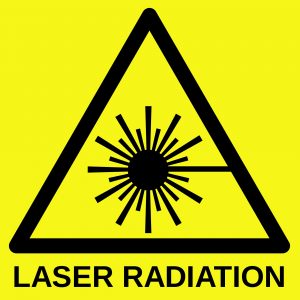University of Toronto Laser Safety Officer TrainingAugust 18 to August 22, 2025 |
The content of this training and the qualifications of the presenter were reviewed and endorsed by the Board of Laser Safety (BLS).
The University of Toronto Office of Environmental Health & Safety (EHS) offers a BLS accredited Laser Safety Officer Training course. The Laser Safety Officer Training course is listed as part of the pre-approved courses that meet the training requirements for the Certified Laser Safety Officer (CLSO) and the Certified Medical Laser Safety Officer (CMLSO) exams.
Starting 2025, we will be offering two completion streams:
- Certificate of Completion: Participants looking to meet the BLS CLSO or CMLSO certification requirements must write the exam at the end of the course. Participants who successfully complete the in-person course and pass the exam will receive a Certificate of Completion that satisfies the BLS training requirement.
- Certificate of Participation: All participants will receive a Certificate of Participation at the end of the course if they choose to not write the end-of-course exam, however, it must be noted that the Certificate of Participation does not qualify participants to write the CLSO or CMLSO certification exams.
Those who already hold CLSO or CMLSO certification and are eligible receive 4 CM points from the BLS.
For more information about the BLS certification exam, please visit: https://www.lasersafety.org/become-certified/eligibility
Details:
Dates: August 18 – 22, 2025 (4-1/2 days in-person)
Course hours: 9:00 to 17:00 (lunch and refreshments provided)
Instructors: Dr. Gustavo Moriena, CLSO; Daniel Cardenas, MSc.
Location: TBD
Fees: please refer to the table below for summary on fees
| Participant Type | Fee |
| External | $2500 + 13% HST |
| U of T faculty, staff, students | No cost |
| Affiliated Institutions (universities, hospitals) | Discount available, please indicate affiliated institution in registration form |
Registration
Please submit the registration form by Monday, July 28th, 2025. We regret that we are unable to accommodate registrations received after this deadline.
Payment Policy: The course fee is non-refundable. The University reserves the right to cancel the course at any time at which point participants will be refunded in full. The University of Toronto must receive payment in full at least two weeks before the start of the course to secure a spot in the session.
Course Content
1 – LIGHT
Course objectives
What is light?
Interaction of light with matter
Characteristics of light
Specular and diffuse reflection, refraction, scattering
Polarization
Energy per photon
Emission and absorption of light
Stimulated emission of radiation
LED
2 – LASERS
Laser components: optical cavity, lasing medium, power source
Types of lasers
Radiometric units – source
Radiometric units – receiver
Point source – extended source
Nominal ocular hazard distance
Fundamentals of Q- switch
Mode patterns – mode locking
3 – LASER SAFETY PRINCIPLES
Retinal hazard region
Beam characteristics
Class 1, 1M and class 1 working environment
Class 2 and 2M
Class 3R
Class 3B
Class 4
Principles of health and safety: – Knowledge, the best defence; – Engineering controls; – Administrative and procedural controls
Administrative and procedural controls ANSI Z 136 requirements
4 – BEAM HAZARDS
Human eye anatomy
Eye-blink and aversion response
Light absorption in the human eye
Photopic and scotopic response
Negative effects dependency on: – Exposure time; – Wavelength
Thermal and photochemical effects
Corneal injury
Lens injury
Retinal injury
Skin anatomy
Skin injuries: – Thermal; – Photochemical
Medical surveillance
5 – NON-BEAM HAZARDS
Electrical hazards
Physical hazards (cryogenics, radiation, gas cylinders, etc.)
Chemical Hazards
Laser Generated Air Contaminants (LGAC)
Fire
Biological hazards
Ergonomics and other factors
6 – LASER HAZARD CONTROL
Hazard assessment
Nominal Hazard Zone (NHZ)
Training as a hazard control
Engineering controls
Administrative controls
Entrance controls
Outdoor controls
Labels
Procedural controls
Personal Protective Equipment (PPE)
Example of SOP
7 – LASER HAZARD CALCULATIONS
Beam diameter
Beam divergence
Maximum Permissible Exposure (MPE)
Laser classification
Nominal Ocular Hazard Distance (NOHD)
Nominal Hazard Zone (NHZ)
Optical Density (OD)
Workshop useful calculations
8 – LASER ALIGNMENT AND MEASUREMENTS
Internal alignment
External alignment
General recommendations
Example of an alignment procedure
Limiting aperture for measurements
Laser power meter and detectors
Measurements procedures
9 – LASER SAFETY PROGRAM
Regulatory requirements
ANSI Z 136 series of standards
ANSI Z 136.1 – parent standard
Manufacturer standards
International standards
Responsibilities for the laser safety program
Laser registration
Controls and training
Inspections and audits of the program
Medical surveillance
Medical applications
Industrial applications
Role of the Ontario MOL
10 – LASER SAFETY OFFICER (LSO)
Who can be a LSO?
Authority of the LSO
Certified LSO
Duties of the LSO
LSO and the Laser Safety Committee
LSO Training
Role of LSO in training laser users
Behavioural laser safety – mentorship
LSO in: research, medical applications, industry, outside applications
11 – LASER ACCIDENTS AND LESSONS LEARNED
Causes of accidents
Accident analysis: root causes of accidents, direct causes of accidents
Most common accidents in laser applications
Lessons learned
Corrective actions
Changes to the program
Case studies
First response, emergency preparedness, CPR information
Accident reporting
Workshop accident analysis and emergency preparedness
12 – PRACTICAL LASER TRAINING
Aligning visible and invisible lasers
Stray beams
Using optical components (lens, mirrors, prisms, beam splitters, etc.)
Laser power measurements
Visit to a lasers lab in U of T
13 – Discussion
14 – Examination & Course Evaluation
